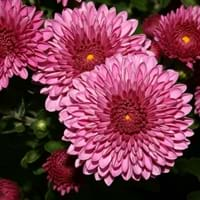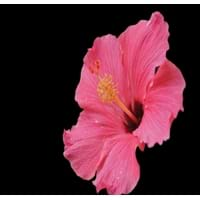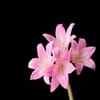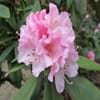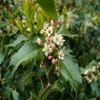Color
Orange, Pink, Purple, Red, White, Yellow
Orange, Pink, Purple, Red, White, Yellow
Color Meaning
Orange - Satisfaction and Passion, Pink - Sensitivity and Love, Purple - Elegance and Pride, Red - Courage, Desire and Love, White - Purity and Innocence, Yellow - Happiness and Friendship
Orange - Satisfaction and Passion, Pink - Sensitivity and Love, Purple - Elegance and Pride, Red - Courage, Desire and Love, White - Purity and Innocence, Yellow - Happiness and Friendship
Line
Not Available
Not Available
Silhouette
Not Available
Not Available
Blossom Texture
Not Available
Not Available
Form
Not Available
Not Available
Sunlight
Full Sun
Full Sun, Part Sun
Watering
Diligently
Diligently
Type of Soil
Loamy
Well-drained, Loamy
Essential Fertilizers
Lime stone, Sulphur
Boron, Calcium, Chlorine, Copper, Magnesium, Manganese, Nitrogen, Phosphorus, Potassium, Sulphur, Zinc
Common Pests and Diseases
List of Pests
Unknown, Unknown, Unknown
Aphids, Mealybugs, Mites, Scale, Whiteflies
List of Diseases
Unknown
NA
Bloom Time
Early Summer Season
All year
Origin
Asia
China, Pacific Islands
Interesting Facts of
- The Rose comes in various colors, although a "black rose " is not literally black but a dark red.
- A single rose suggests utmost devotion while two rose entwined together says "Marry me".
- In China Hibiscus is also called as shoe flower as they use it to polish their shoes.
- Hawaiian and Tahitian wear this flower behind the right flower to announce that they are single and ready to marry,while married women wear it in left ear.
Lifespan
Annuals - complete its full life cycle in one growing season
Perennials - a plant that lives for three or more years
Habit
Shrubs
Shrubs, Trees
Uses
Not Available
Not Available
Health Benefits
Unknown, Unknown, Unknown, Unknown, Unknown, Unknown
Best remedy for Cough & Cold, improves the functioning of the lungs, kidneys, and stomach, Regulates the Menstruation cycle
Medicinal Uses
Unknown, Unknown
Acts as an antioxidant, It is Antibacterial, prevents dryness and flaky skin
Culinary Uses
Unknown, Unknown, Unknown, Unknown, Unknown, Unknown
Used in teas
Cosmetic Uses
Best for Healing, Unknown, Unknown, Unknown, Used after facial and cleansing, Unknown, Unknown, Unknown
Good for Hair growth, Prevents pre- mature graying, Used in Perfumes, Used in shampoos and soaps
Occasional Uses
Father's Day, Funerals, Sympathy
Valentine's Day
Scientific Name
Dendranthema grandiflorum
Hibiscus Rosa-Sinensis
Sub kingdom
Tracheobionta
Tracheobionta
Super Division
Spermatophyte
Spermatophyte
Division
Magnoliophyta
Magnoliophyta
Class
Magnoliopsida
Magnoliopsida
Family
Asteraceae
Malvaceae
Sub Family
Asteroideae
Malvoideae
Genus
Not Available
Not Available
Number of Species
Not Available
Not Available
More about Chrysanthemums and Hibiscus Facts and color
You must be curious to know more about Chrysanthemums and Hibiscus facts and color. flowers.comparespecies.com will let you know all the Interesting Facts about Chrysanthemums and Hibiscus. Chrysanthemums comes in Orange, Pink, Purple, Red, White, Yellow colors whereas Hibiscus flowers are with Orange, Pink, Purple, Red, White, Yellow colors. Other Chrysanthemums and Hibiscus facts will definitely amuse you.
Chrysanthemums and Hibiscus growing conditions
Absolute growing condition is the only key to keep plants in good health and in good shape. Let’s learn about essential Chrysanthemums and Hibiscus growing conditions. Chrysanthemums requires Full Sun and Diligently watering with 6.00 of Loamy soil. Hibiscus needs Full Sun, Part Sun and Diligently watering with 6.00 of Well-drained, Loamy soil. Get other Chrysanthemums and Hibiscus facts in the sections below.
Chrysanthemums and Hibiscus Facts
Want to know about Chrysanthemums and Hibiscus facts? Get all the Chrysanthemums and Hibiscus facts here.
Chrysanthemums and Hibiscus Classification
After knowing about various Chrysanthemums and Hibiscus facts, let's study their classification. Based on genetic and physical features, Chrysanthemums and Hibiscus classification starts with knowing their scientific name. The scientific name of Chrysanthemums and Hibiscus is Dendranthema grandiflorum and Hibiscus Rosa-Sinensis respectively. Chrysanthemums belongs to Asteraceae family whereas Hibiscus falls under Malvaceae family. Also check out Flowers by Color so as to plant colorful aroma in the garden.
